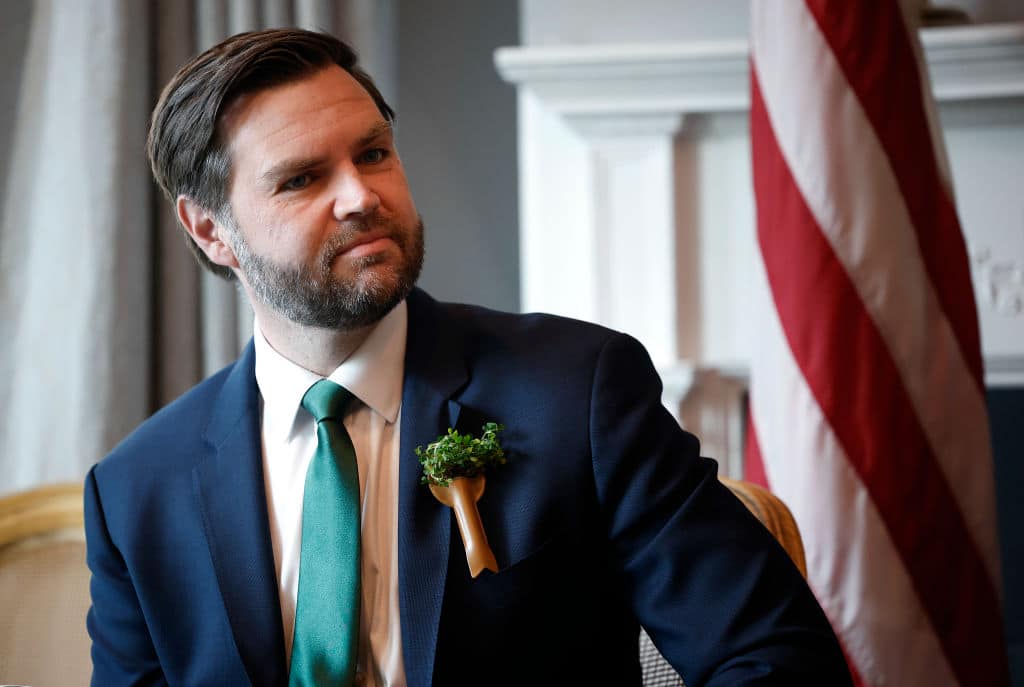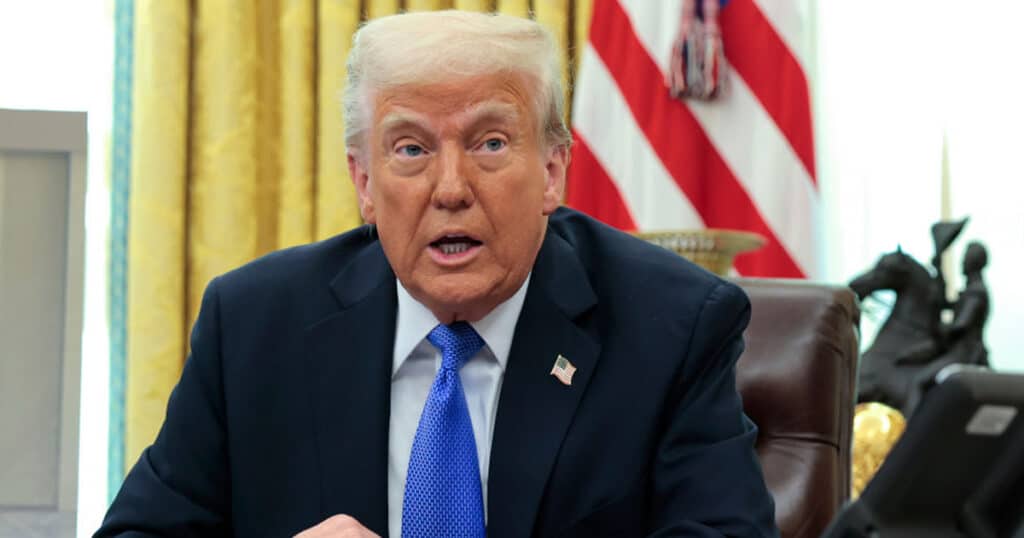Turbulence in the West Wing: JD Vance and the Brewing Power Struggle Inside Trump’s Second Term
In recent weeks, the White House has found itself engulfed not by external threats or partisan attacks, but by a deepening internal rift that suggests growing instability within the Trump administration. Less than 100 days into Donald Trump’s second term, political observers and insiders alike are beginning to question not only the administration’s direction but also its ability to function as a cohesive governing force.
At the center of this internal drama is a surprising figure: Vice President JD Vance. Once seen merely as a loyal second-in-command, Vance has emerged as a pivotal player in what appears to be a quiet but intensifying power struggle. While public displays of unity remain intact, a series of recent developments paint a picture of behind-the-scenes friction that could have major implications for the presidency — and for the future of the Republican Party.
The controversy reached a boiling point following the leak of private Signal messages from a group chat involving high-ranking officials and conservative insiders. These messages, allegedly shared with journalist Jeffrey Goldberg, include subtle critiques of President Trump’s foreign policy decisions, particularly his unpredictable stance on military engagement in the Red Sea region. Among the most notable voices in the chat was Vice President Vance, who reportedly expressed concern over the administration’s mixed signals and strategic contradictions.

While Vance’s language in the messages was measured, the implications were anything but. For a sitting vice president to even hint at dissent within such a sensitive policy area was enough to spark immediate speculation. Was this a rare moment of candor, or a carefully calculated move? Some interpreted it as a signal that Vance may be distancing himself from Trump in preparation for a more prominent leadership role — possibly even the presidency itself.
Political analysts have been quick to weigh in on the situation. Adam Boulton, writing for The i, suggested that Trump’s biggest political threat may not be external opponents, but the man standing beside him. Boulton points to Trump’s erratic behavior — ranging from rebranding geographic locations to imposing tariffs on allied nations and suspending key foreign aid — as behaviors that could alienate even his closest allies. If these actions continue unchecked, Republicans may begin looking toward JD Vance as a more stable alternative.
JD Vance’s political journey has been nothing short of extraordinary. Once a vocal critic of Trump, he famously likened the former president to “America’s Hitler” in his early political commentary. That Vance has since become one of Trump’s staunchest allies is a testament to both political pragmatism and the evolving ideological landscape of the Republican Party. However, this transformation has drawn as much skepticism as admiration.
To some in the conservative base, Vance’s shift is seen as a shrewd move, one that reflects a willingness to compromise for the sake of influence. To others, it signals a deeper issue — an inconsistency in core beliefs that raises questions about his long-term leadership style and loyalty. Critics argue that such fluidity could make him unpredictable or overly opportunistic in higher office.
The timing of this internal power tension is especially concerning given broader questions about the health of American democracy. Scholars like Staffan Lindberg of the V-Dem Institute have sounded alarms about creeping authoritarianism, pointing to executive overreach, the weakening of institutional checks, and targeted actions against dissent. The Trump administration’s approach to governance — including barring foreign scientists based on private views and issuing sweeping executive orders — only deepens those concerns.

Meanwhile, public trust in democratic norms appears to be eroding. Commentators like Tara Setmayer argue that political elites and the media have been too slow or too timid in calling out these dangers. The normalization of anti-democratic behavior, she warns, could have lasting consequences, especially if unchecked dissent within the executive branch leads to further fragmentation.
Constitutionally, there are mechanisms designed to prevent or respond to presidential instability. Impeachment remains a formal route, though Trump has twice survived the process. Another option lies in the 25th Amendment, which empowers the vice president and a majority of the cabinet to declare the president unfit for office. This would trigger a congressional process requiring a two-thirds majority in both chambers to enforce a permanent removal.
There’s also the historical precedent of resignation under pressure, as seen with Richard Nixon in the wake of the Watergate scandal. However, given Trump’s past resistance to accountability and his deep support among a significant portion of the electorate, resignation seems unlikely — barring an overwhelming political shift or a major crisis.
Should Trump’s administration continue to fracture, JD Vance could find himself at a historic crossroads. As vice president, he is constitutionally next in line. But the real question is not whether Vance could assume the presidency — it’s how he would lead if he did. Would he continue Trump’s policies while adopting a more restrained tone, or would he diverge from Trumpism altogether in favor of his own vision?
So far, Vance has maintained a delicate balancing act: aligning with Trump’s base while projecting a calmer, more composed persona. This has earned him praise within parts of the GOP, particularly among those who seek Trump-style policies without the accompanying chaos. But it has also left some wondering whether Vance’s ideological flexibility could make him susceptible to influence or indecision at critical moments.
As political theater continues to unfold in Washington, the Biden administration’s absence from the national spotlight has given Trump room to dominate the headlines. Yet the true drama may be happening quietly behind closed doors — in whispered conversations, private messages, and shifting alliances within the West Wing.
The atmosphere within the White House is one of tension and uncertainty. Trump’s governing style — bold, brash, and often impulsive — may still resonate with his base, but it appears to be wearing thin among some of his inner circle. As these pressures mount, the role of JD Vance becomes increasingly important, not just as vice president but as a potential successor — or challenger.
For now, the administration remains intact. But the signals are clear: fractures are forming, and ambitions are stirring. Whether this results in a dramatic power shift or a renewed call for unity remains unknown. What is certain, however, is that the coming months will test the limits of loyalty, strategy, and leadership within the highest office in the land.
As the American public watches closely, the political future of JD Vance — and the fate of Trump’s second term — hangs in the balance. What was once considered a solidified partnership may soon evolve into a rivalry that could reshape the Republican Party and redefine the presidency for years to come.





